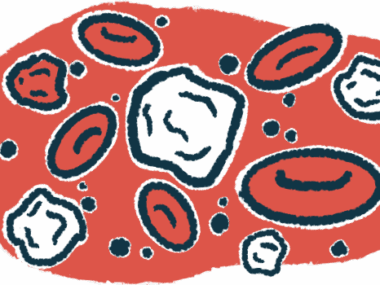Bacteria and fungi are able to coexist in CF lung infections: Study
Exposing P. aeruginosa to A. fumigatus activates PA4170 gene
Written by |

Researchers have uncovered a mechanism by which Pseudomonas aeruginosa and Aspergillus fumigatus — two common infection-causing microbes in the lungs of people with cystic fibrosis (CF) — are able to coexist and infect at the same time.
In preclinical studies, P. aeruginosa appeared to release an enzyme that protected it against a toxin released by A. fumigatus. Researchers believe that understanding the relationships that let microbes coexist will lead to better treatments for chronic lung infections in CF.
The study, “Convergent evolution in toxin detection and resistance provides evidence for conserved bacterial–fungal interactions,” was published in PNAS.
The thick and sticky mucus that builds up in the lungs of people with CF offers a breeding ground for infection-causing microbes, including bacteria, fungi, and viruses. Chronic lung infections from these pathogens cause damage that affects lung function and are a leading cause of death in CF.
“Cystic fibrosis results in a wide range of challenging symptoms which impact the entire body, but repeated lung infections leading to lung damage is the major cause of mortality,” Stephen Dolan, PhD, an assistant professor at Clemson University in South Carolina and the study’s first author, said in a university press release.
Among the most common culprits are the bacteria P. aeruginosa and the fungi A. fumigatus. While healthy people can be exposed to these pathogens without getting sick, P. aeruginosa or A. fumigatus can cause serious infection and potentially life-threatening illness in people who are already sick or have weakened immune systems.
Microbes, including helpful and harmful ones, don’t live alone. They usually form communities, made up of many different types, to help them survive and defend themselves against efforts to get rid of them. Indeed, P. aeruginosa and A. fumigatus coinfect lungs in CF and this coinfection has been linked to more severe outcomes. Understanding how the two interact is thus important for developing strategies to combat chronic lung infections in CF.
Bacteria, fungi share protection racket in PA4170 gene
Here, Dolan and his colleagues uncovered a system through which P. aeruginosa and A. fumigatus coexist in CF lungs. Using a laboratory model designed to mimic human CF sputum, that is, phlegm that’s coughed up from the airways, the scientists found that when P. aeruginosa was exposed to A. fumigatus, the PA4170 gene was activated. This gene and the enzyme it’s responsible for producing haven’t been well characterized, leading the researchers to learn more about them.
Through experiments, the scientists discovered that levels of the PA4170 enzyme were elevated when P. aeruginosa was in the presence of A. fumigatus. Particularly, a toxin produced from A. fumigatus called gliotoxin caused P. aeruginosa to make more of the enzyme.
The scientists determined that PA4170 helps protect P. aeruginosa from gliotoxin’s harmful effects, allowing the two microbes to coexist. Without it, the bacteria couldn’t survive when A. fumigatus was present. The fungi uses this same mechanism to protect itself against gliotoxin.
The scientists believe the system has evolved over time, during which the two microbes had to learn to live with each other.
“It appears that ecologically, over millions of years, these microbes have been growing together in soil and have developed elaborate strategies to compete for space and nutrients, and then when they get into humans, those in-built mechanisms have allowed them to coexist and cause serious infections,” Dolan said. “It’s like a marriage of convenience in the sense that most other microbes can’t occupy the same niche alongside these pathogens, but they’re able to withstand each other.”
PA4170 also appeared to be able to defend P. aeruginosa against other toxins similar to gliotoxin.
The scientists hope the discovery will offer insights into developing new treatment options for complex lung infections that involve multiple microbes in people with CF.
“In addition to providing evolutionary insight, these … enzymes may yield useful starting material for protein engineering and synthetic biology approaches,” the researchers wrote.







